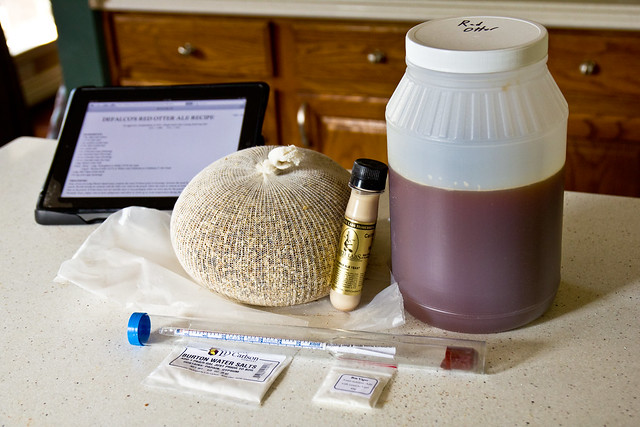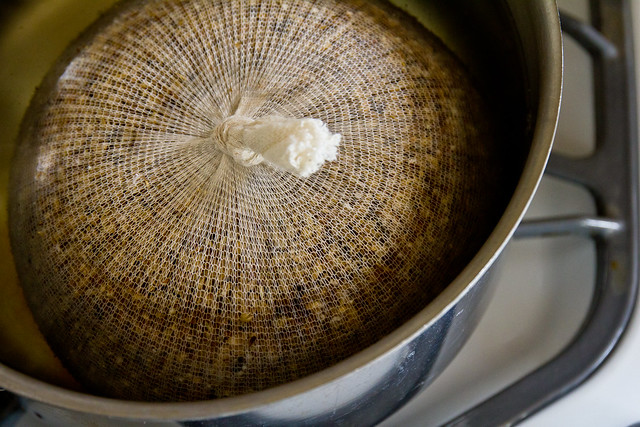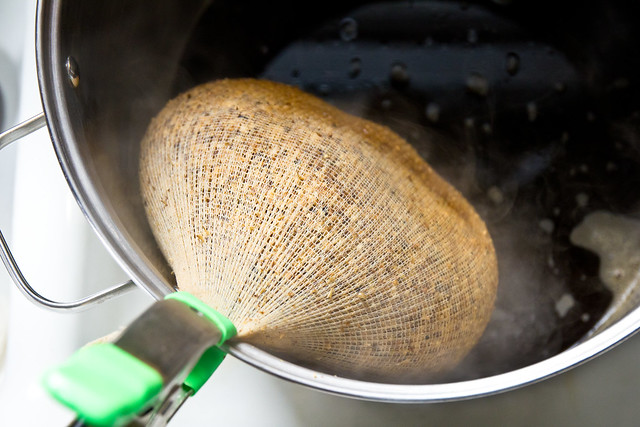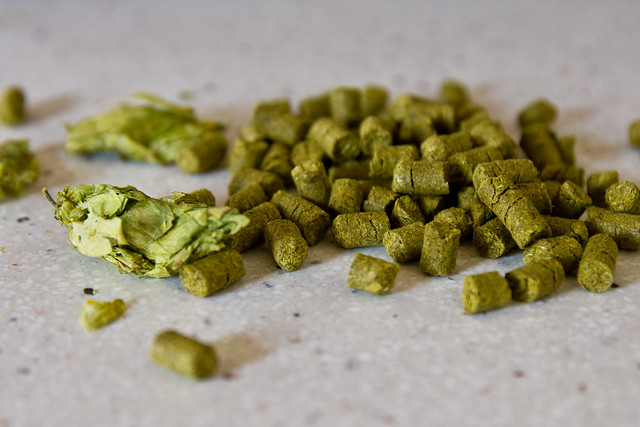
We spent most of the holiday weekend inside, with the AC turned way, way down. It was the only way we could pretend that it wasn’t feels-like-106 outside.
We baked with apples, we had pumpkin spice lattes, and we made Frito Pie from a big batch of crockpot chili. And then I nearly died of heat stroke taking out the garbage.
But the highlight of the weekend was beer. We started a new project, a “copper” ale that we’re calling “29” after (geek alert!) copper’s position on the periodic table. We fell in love with the beautiful coppery, red-orange pour from a local microbrewery and welcomed the challenge of recreating it at home (which is how most of our beer projects happen).
The only thing funner than drinking beer that you’ve made is coming up with a geeky name for beer that you’ve made. True story.
Brew Day is the first of three stages: brewing, secondary, and bottling (or kegging). It starts with the most unfun thing ever – cleaning your kitchen. Sanitation is extremely important so you’ll never, ever find our kitchen as clean as it is on Brew Day. We’re talking your mother-in-law is coming over… times 384 clean. We’re talking operating room clean.
Brewing beer isn’t overly difficult – you’re simply following a recipe. Here’s a quick run-down of the process (“extract brewing”):
We steep a bag of grains (the contents depend on the style of beer that you’re brewing) in a gallon of hot water, making a “tea.”
We then slowly rinse the grains with a couple of gallons of hot water, collecting everything in our brew kettle.
That (now called wort) goes on the stove to boil after adding malt extracts and hops. Your house will smell awesome. And a whole lot like a bowl of GrapeNuts. Hops are a whole ‘nother topic on their own. They’re used for bittering, flavoring, and aromatics, depending on when they’re added during the boil. For the 29, we used Chinook (bittering) and Cascade (flavoring, aromatic, and dry hop in secondary).
After cooling, we transfer the wort to the fermenter and add yeast nutrient, yeast, and a little extra water to bring our total volume to 5 gallons. Fix the lid on tight, add the air lock – gas gets out, air and other undesirables can’t get in – and then the real magic happens.










